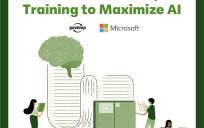The role of Chief Data Officer (CDO) is still new in government. There are 20 plus CDOs in local government. Many of us are the first in the role. Others are responsible for data strategy sans the title. Since the role is growing, I often find myself in phone calls with new CDOs or CDO equivalents. The article below summarizes my usual guidance.
Regardless of your title, your first task is to define the role. Most new CDOs are given broad, ambitious mandates but little guidance on specifics. The tips below focus on how to shape this role to match the needs of your jurisdiction (not what you think it should be).

Engage a Broad Range of Stakeholders
Someone in your government decided to create the role of Chief Data Officer. Since data is the new sexy, this is probably a senior executive or elected position. Obviously, you need to understand their expectations for the role.
But to have an effective data strategy, you need to cast your stakeholder net much wider. A broad stakeholder engagement plan will allow you to sow the seeds of future relationships and sniff out concerns, issues, existing work or opportunities early. Below are the minimum list of stakeholders to engage and why:
| Stakeholder | Why you need to engage them |
|---|---|
| Department and division heads | They oversee the generation and management of much of the data in your jurisdiction. Understanding their perspective and data challenges is essential. |
| Policy and planning shops | They have a deep understanding of the business and operational questions within their function. They are an excellent source of data questions. |
| Analysts and existing analyst networks or teams | Analysts have munched on data. They can articulate problems around accessing and using data. |
| Performance management office | This office can be a key partner in terms of elevating the most important data and surfacing good questions. |
| Budget office | This office will have data questions or blind spots and can help articulate data needs across departments. |
| Public information officers | PIOs have a strong understanding of data questions and expectations from the public. They also understand major areas of public misunderstanding that data may be able to address. |
| GIS teams | GIS people are your natural friends. They’ve been trying to promote use of geographic data for decades. |
| Digital services teams | Similar to you, digital service teams need to consume data as a service and will be natural partners for a data service infrastructure. |
| Data warehousing and BI shops | This group of IT staff has deep knowledge about the backend systems and data sources. |
| Constituent and external groups | You may have existing external groups to engage (e.g. if you are in charge of open data, you may have a local brigade). But tread carefully – your departments probably manage these relationships. |
Diagnose your Organizational Position and Strategic Partners
Another result of the newness of this role is the range of placements. CDOs may find themselves in any of the following groups: the performance office, the controller or financial executive, the CIO shop, the innovation team, or the mayor/city manager.
Each position has tradeoffs that are a function of your local jurisdiction. You need to assess your placement by exploring the following lenses:
- Reputation: What is the reputation of where you sit?
- Influence: What is the scope of your function? What decisions and dollars does it control?
- Service versus governance: Is your function in primarily a service or governance role?
- Existing work or projects: What existing data work is in progress?
- Existing relationships and partnerships: What existing relationships or partnerships work or don’t work?
For each of these, answer the following questions:
- Does this help or limit a data strategy?
- Does this preemptively prioritize certain types of work?
- Does this facilitate or block working with certain groups or on certain topics?
Identify, Prioritize and Address the Data Challenges
Your jurisdiction may have little data focused work or a great deal. Each extreme has its own risk:
- Little data work: The risk is that you are expected to be a magical data person who can do everything.
- Extensive data work: The risk is that you are dismissed as unnecessary.
The best way to resolve this is to systematically identify and prioritize data challenges. We did this by:
- Doing a bunch of interviews to understand the shape of data challenges in the city
- Quantifying those challenges with what is now an annual survey (that also serves as a nice program assessment tool)
- Presenting the results, proposed priorities and feasible ideas on how to address the priorities to key stakeholders
- Developing an implementation plan
Throughout this, be humble and tailor your data strategy to meet people where they are. This will open up new ideas and opportunities. Read more about our data strategies. And read this article by Jane Wiseman on Lessons from Leading CDOs.
Want more? Read a Q&A with Los Angeles’ Chief Data Officer, or Becoming a Data Leader.
Joy Bonaguro is part of the GovLoop Featured Contributor program, where we feature articles by government voices from all across the country (and world!). To see more Featured Contributor posts, click here.





These days everything comes down to data, this was a really useful post in explaining how and why different folks engage with data on a day to day basis!